Subscriber Spotlight: Leta Keens
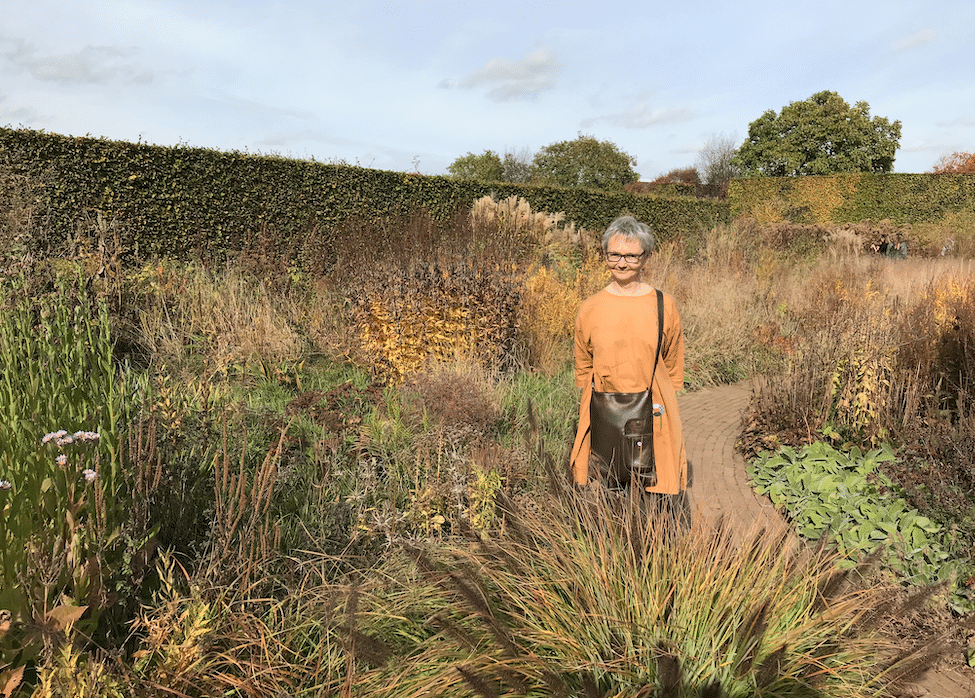
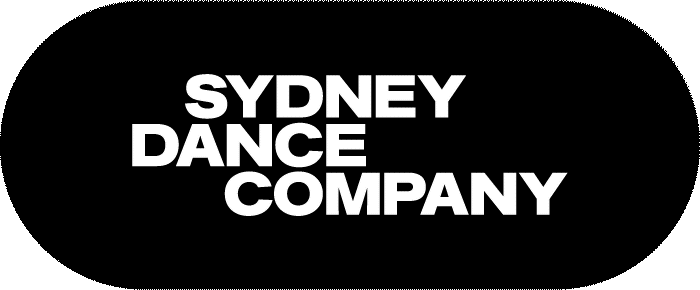
published
An instant smash-hit when it premiered in New Breed 2017, Melanie Lane’s WOOF makes a grand return to the stage as part of our 50th Anniversary triple bill this March.
Taking inspiration from classical dance, Renaissance art and pop culture, WOOF imagines a future fantasy of a post-human collective spirit. We talked to Melanie about her choreographic style and what audiences can expect from her work:
Q. What are the inspirations behind WOOF?
The invitation to work with 12 dancers from the Company back in 2017 for the premiere of WOOF was really inspiring. As an independent choreographer, I rarely have the opportunity to work with a large group.
I was interested in modes of collective actions such as crowd behaviour, military training and corps de ballet, while also embracing a sense of community. I was interested in stealing from these ideas and reinventing a kind of post-human army that slips between primal modes of sensuality, violence and belonging. I feel there is an urgency in the way we as humans navigate this accelerating world, so I’m interested in reflecting that in this work.
I hope WOOF evokes a multitude of experiences for the audience. I think there are many sentiments in the work that speak of community, belonging, collective power and vulnerability. Mostly, I think there is a definite sense of transformation, how being human can be messy, outrageous and beautiful.
Audiences will have their own readings of WOOF which may be completely different to the things I’m talking about. That’s the best part about sharing dances – you take home your own questions and experiences. Also, the original music composition from Clark is pretty incredible!
I often feel like it’s simultaneously over dramatic and very minimal, kind of bouncing between these two poles. I would describe it as restless, controlled, seductive and often strangely theatrical.
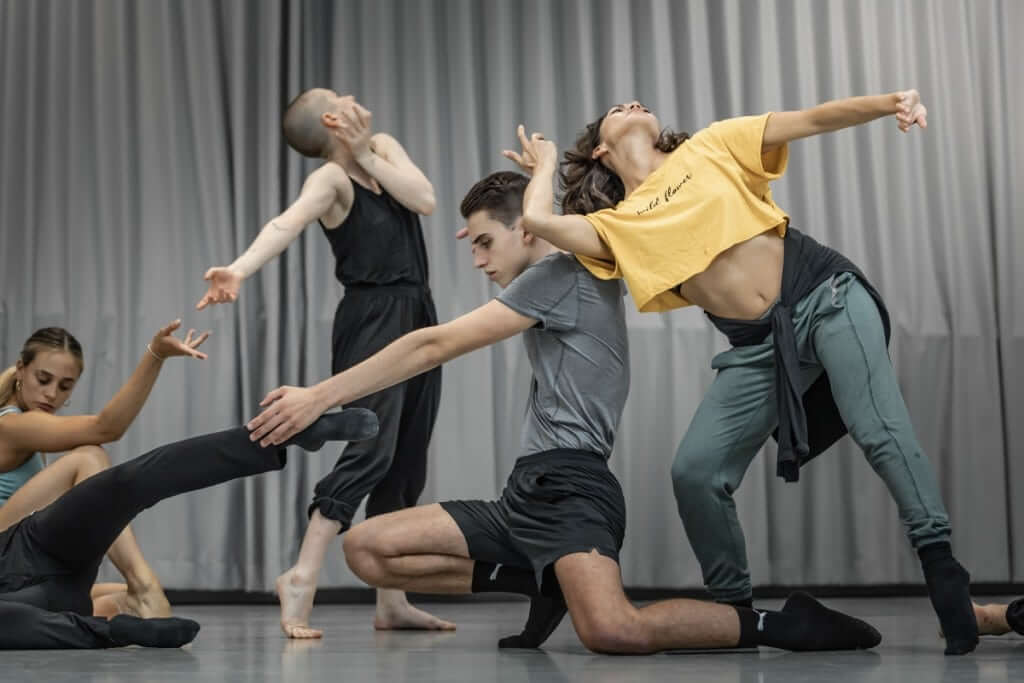
Company dancers rehearsing WOOF. Photo by Pedro Greig.
Remounting WOOF has been a joy. To revisit and work with many new dancers has obliged me to really go back to the roots of the work. It has been a necessary process to be able to share the origins of ideas and processes that generated much of the material for the work. I really wanted the dancers of the new cast to feel like they had their own personal contributions, while also retaining the voices of the previous cast of artists within the spirit of the piece. It has also been important to me that they experience some of the research that built the foundations of the choreography.
Some of the choreography has been further developed in collaboration with the new dancers, while the original choreography continues to be interpreted by each individual in a new way. There is quite a lot of improvised material that requires the dancers to work together in a collective spirit, so we spent a lot of the rehearsal period practising the specific improvised physical tools that are necessary to communicate with each other. All the Sydney Dance Company dancers are so diverse and gifted with their own unique artistic voices. They are a super inspiring bunch of people to be working with and I feel pretty privileged to be in the position to make dances with them!
For this remount I have also been able to rework the costumes with costume designer Aleisa Jelbart, who has created designs for each new dancer joining the creation.
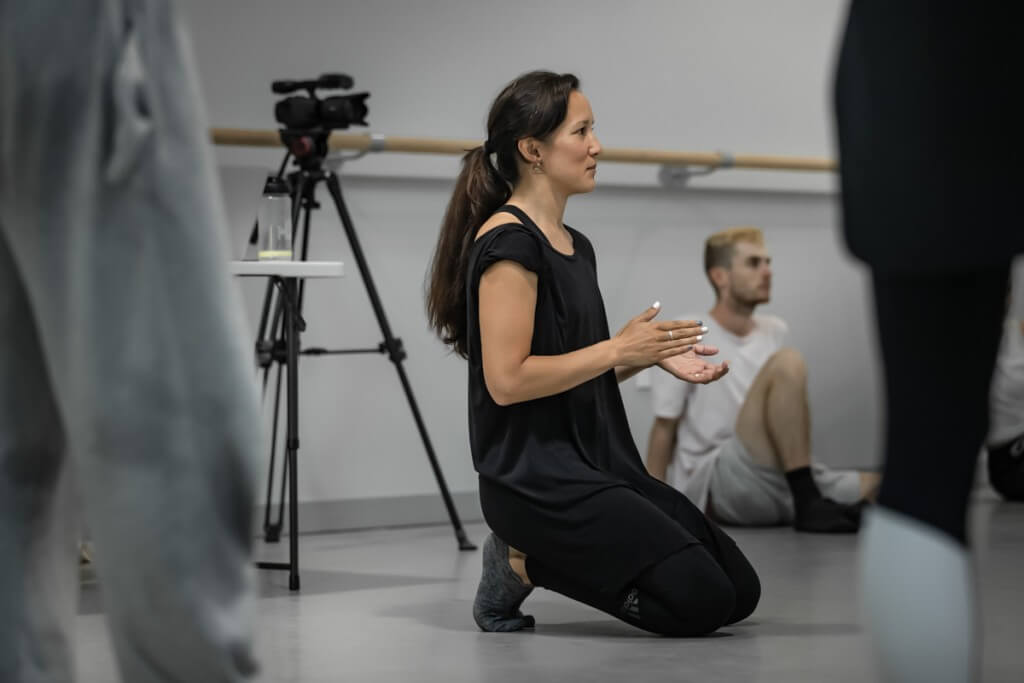
Choreographer Melanie Lane in the studio. Photo by Pedro Greig.
Yes, I love working with dancers, and have also worked on projects with non-dancers which has been really rewarding. I also often collaborate with artists from fields of visual art, sound and new media. Recently, I have been interested in learning from and working with bodies (other than contemporary dancers) who share a highly trained experience.
In 2016 I worked with former Australian Ballet dancer Juliet Burnett for Chunky Move and created a new work with and for two female bodybuilders in Berlin. In 2017 I connected with local exotic dancers for my production Nightdance at Arts House in Melbourne which will return to the stage at Melbourne’s Dance Massive festival this March.
I’m interested in meeting and learning from people who experience a different physical history and narrative to my own, which helps expand my understanding of the body and its capacity to express and communicate beyond our known sphere.
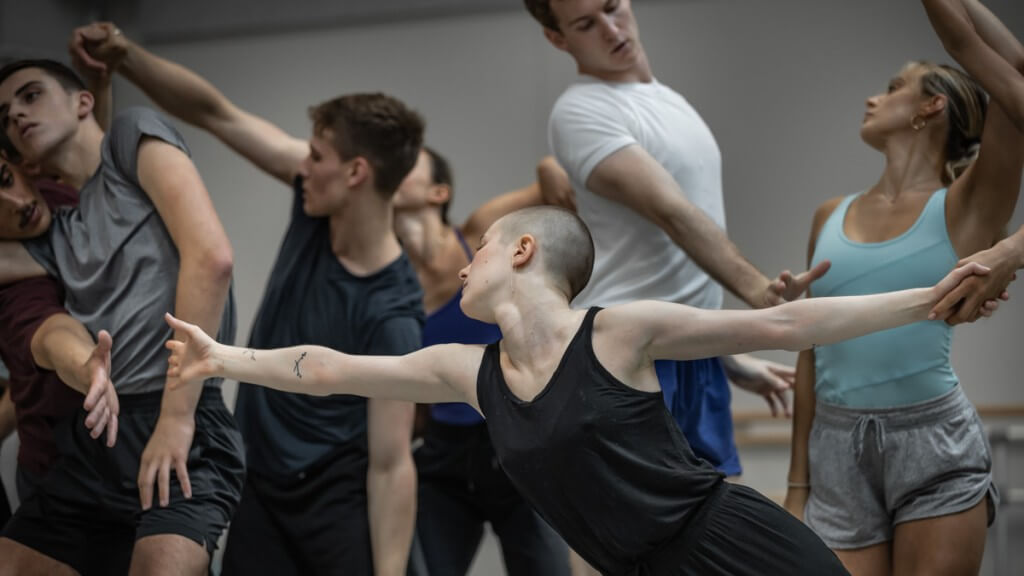
Company dancers in the studio. Photo by Pedro Greig.
The last year has been full of really exciting projects. Being part of Sydney Dance Company’s 50th Anniversary is a major highlight! It’s such an honour to be involved in celebrating the Company’s legacy in this way and I couldn’t be more excited to be sharing the program with the incredible Rafael Bonachela, Gabrielle Nankivell and Gideon Obarzanek. How wild!
Last year, I was honoured to receive the Keir Choreographic Award, an Asialink Creative Exchange in Indonesia and the Leipziger Bewegungskunstpreis, all of which have really supported me in working rigorously on my choreographic practice and have certainly contributed to a pretty great year.
Q. What do you love most about contemporary dance?
I love the ephemerality and limitless possibilities that can be experienced both as a maker and as an audience. I’m excited by its ability to manifest languages beyond what we are conditioned to and how it can transform and/or ask questions about the way we see the world.
See Melanie Lane’s WOOF as part of Sydney Dance Company’s 50th Anniversary triple bill, Bonachela / Nankivell / Lane from 26 March in Sydney, Canberra, Melbourne & on National Tour across Australia.